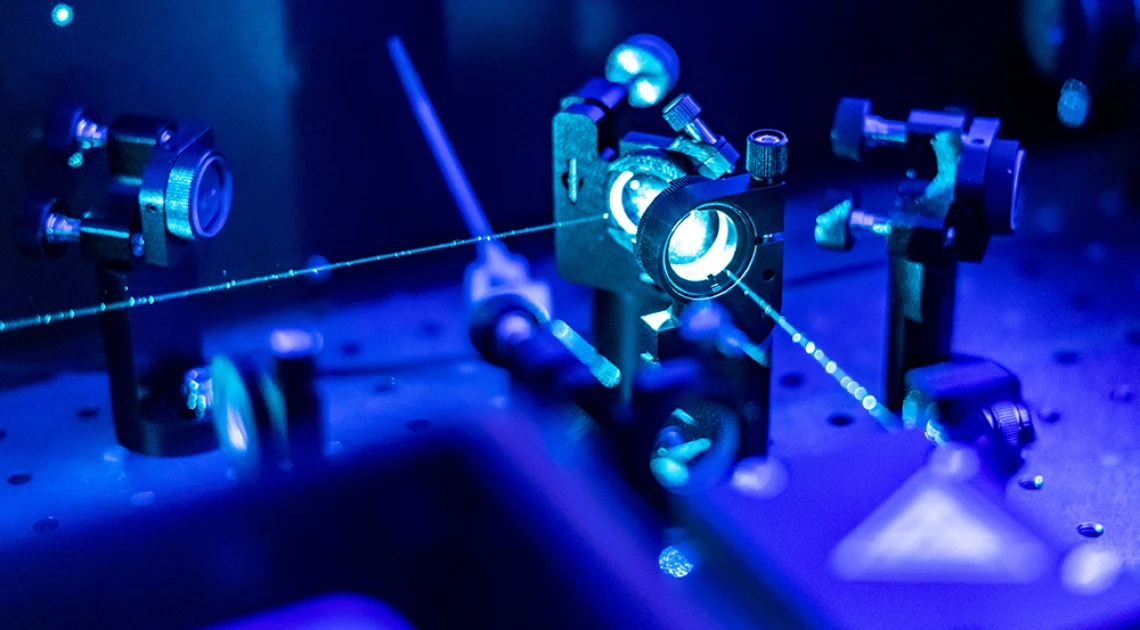Inventors Formulate Material for More Powerful Lasers and Better Aircraft Countermeasures

TUCSON, Ariz. – Researchers at the University of Arizona have developed a method for enhancing the performance of optical fiber lasers. Optical fiber – which is made of silica glass or other multi-component glass – provides a conduit for transmitting light, including lasers. By adding different elements to that fiber, a process called “doping,” inventors can change the properties of how such fiber transmits light.

Nasser Peghambarian, Ph.D.
Photo: James C. Wyant College of Optical Sciences
In this case, a team of five inventors led by Nasser Peyghambarian, Ph.D., professor of optical sciences and materials science and engineering at the James C. Wyant College of Optical Sciences, created a formulation for phosphate-doped fiber and tellurite-doped fiber, enhancing their performance and allowing for the building of more powerful fiber lasers and optical amplifiers.
With the help of Tech Launch Arizona, the commercialization arm of the UArizona, the university has patented the technology and licensed it to startup CMLaser Technologies, Inc.
Such lasers, which have direct applications in laser-based countermeasures for military and non-military aircraft, are enabling the development of aircraft-based technologies for detecting and defeating missile attacks. Heat-seeking missiles, invented in the 1970s, work by targeting the heat of jet engines. To foil these missiles, aircraft would deploy bright thermal flares to “fool” them and draw them away. As technologies have advanced, engineers have turned to laser-based technologies for such countermeasures.
”We have been doing this research for more than 10 years,” said Peyghambarian, “working with students and research faculty to create a technology that is defensive in nature and will save lives.”
Led by Peyghambarian in the early 2000s, the inventing team included adjunct professors at the time Axel Schulzgen and Seppo Honkanen; Jacques Albert, now a professor of electrical engineering at Carleton University; and Ph.D. student at the time Li Li.
UArizona President Robert C. Robbins praised Peygambarian’s dedication to his students, his field, and to the idea of creating impact through research.
“Dr. Peyghambarian is a true superstar, and the Wyant College of Optical Sciences has an incredibly strong tradition of innovation in technologies that contribute to our national security and public safety,” he said.
Peyghambarian has a long history of both educating students as well as developing cutting edge technologies and commercializing them. He is an inventor on more than 40 patents, and this is the fifth startup in which he has been involved to bring inventions he has developed to the marketplace.
In 2016, the National Academy of Inventors named Peyghambarian as a Fellow, the organization’s highest honor.
CMLaser Technologies has already secured investment from UAVenture Captial, led by UArizona alumnus and CEO Fletcher McCusker. According to McCusker, the funds will be used to advance the technology, better preparing it for application in practical settings.

